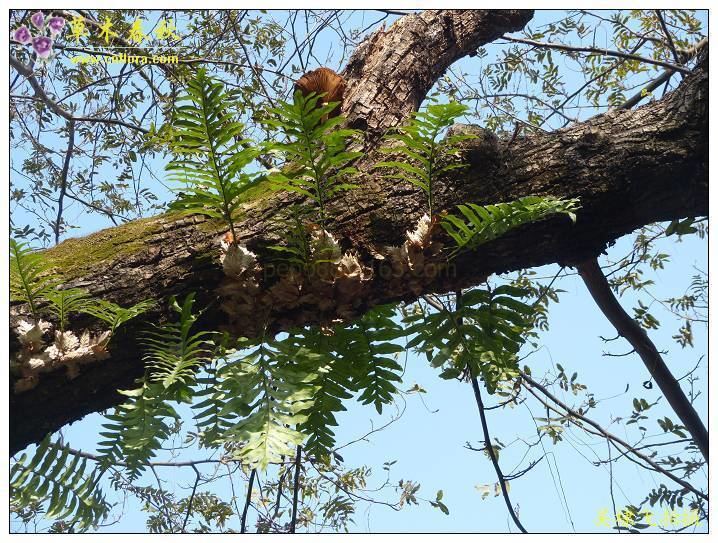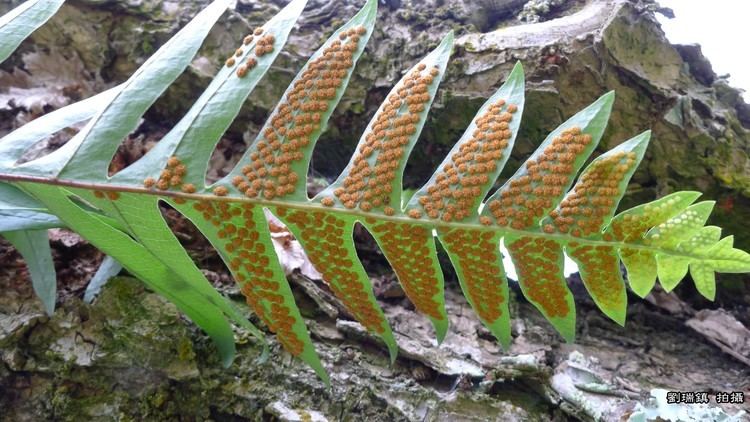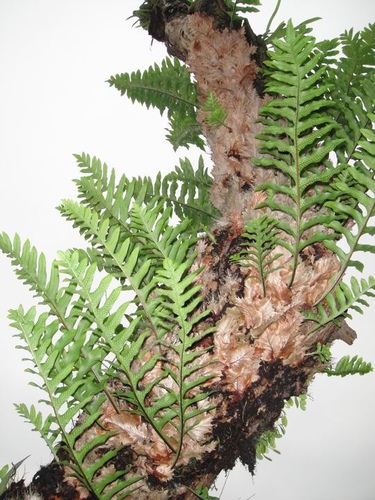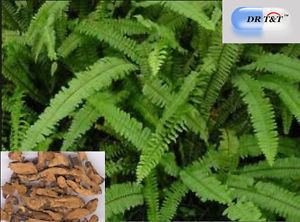Kingdom Plantae Order Polypodiales Genus Drynaria Higher classification Drynaria | Division Pteridophyta Family Polypodiaceae Scientific name Drynaria fortunei Rank Species | |
Similar Drynaria, Davallia mariesii, Polypodiaceae, Vascular plant, Cibotium barometz | ||
Drynaria roosii, commonly known as gu-sui-bu, is a species of basket fern of the family Polypodiaceae. The plant is native to Eastern Asia, including eastern China.
Contents

It is used in traditional Chinese medicine. This species is also more frequently cited by Asian studies by its synonym, Drynaria fortunei.

Description

Drynaria roosii is an epiphytic (growing on trees) or epipetric (growing on rocks) plant. Like other species of Drynaria, they possess two frond types – a fertile foliage frond and a sterile nest frond.

Sterile nest fronds are rounded shallowly-lobed reddish-brown fronds overlapping each other. They bear no sori and form a 'basket' characteristic of the genus. The fertile fronds are larger and deeply lobed. They bear 1 to 3 sori arranged on both sides of the central rib.
Medicinal uses

Preparations from the rhizomes of Drynaria roosii is used in traditional herbal medicine for aiding in the healing of bone fractures and for treating rheumatoid arthritis.
Pharmacological study
Modern studies of Drynaria roosii have identified in vitro effects on isolated bone cells.
Flavan-3-ols and propelargonidins can be isolated from the rhizomes.
Vernacular names

Drynaria roosii is known as Gu-Sui-Bu (骨碎補) in Chinese (English: "mender of shattered bones"). A reference to its use in traditional Chinese medicine for healing broken bones.
Other common names in Chinese include Mao-chiang ('hairy ginger'), shih-pan chiang ('stony plate ginger'), wang-chiang, shih-chiang, hou-chiang ('monkey ginger'), p'a shan hu (mountain-climbing tiger), feng chiang, p-yen chiang, hou-sheng chiang, and hou chueh.
It is also known as Gol-Se-Bo in Korean and Cốt toái bổ in Vietnamese.
Classification
Drynaria roosii is classified under the genus Drynaria (basket ferns) of the family Polypodiaceae. It is more frequently cited by Asian authors by its synonym Drynaria fortunei.
